The Largest Snakes In The World
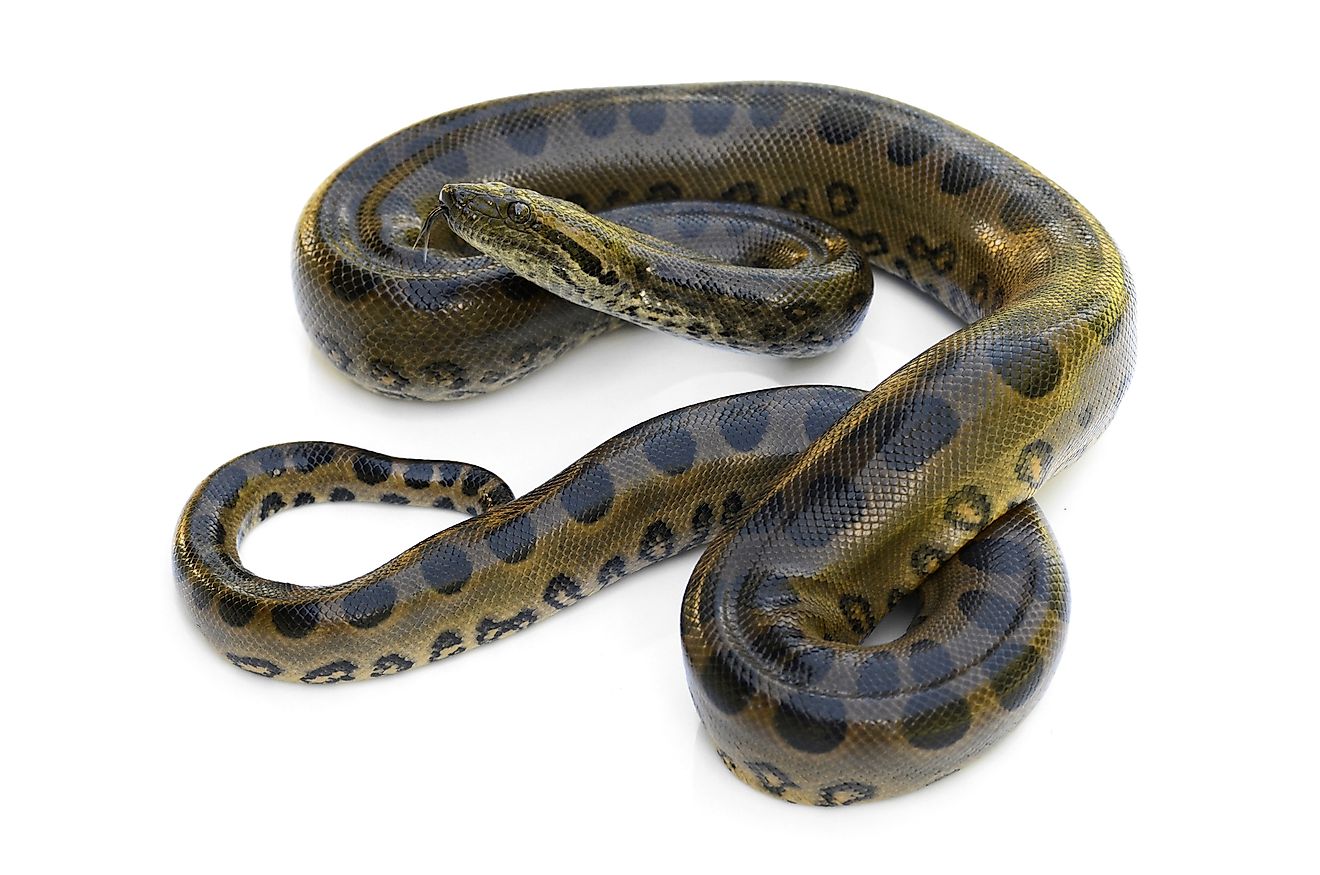
Measured either by their length or by weight, the world’s largest living snakes are mainly members of the Pythonidae and Boidae families. Most of these large snakes are non-venomous constrictors and include anacondas, pythons, and boa constrictors. Some of these snakes have a length that reaches 6m (20ft) and a maximum mass that may exceed 22kg (50 lb). Nevertheless, all these reptilian species play a vital role in the proper functioning of the world’s ecosystem. The predatory nature of most of these species helps in maintaining the delicate natural balance in the ecosystem.
Content:
- The Reticulated Python – The Longest Snake In The World
- The King Cobra – The Longest Venomous Snake
- The Yellow Sea Snake – The Longest Sea Snake
- Green Anaconda – The Heaviest Snake In The World
- The Eastern Diamondback Rattlesnake – The Heaviest Venomous Snake
- Other Large Snakes
The Reticulated Python – The Longest Snake In The World
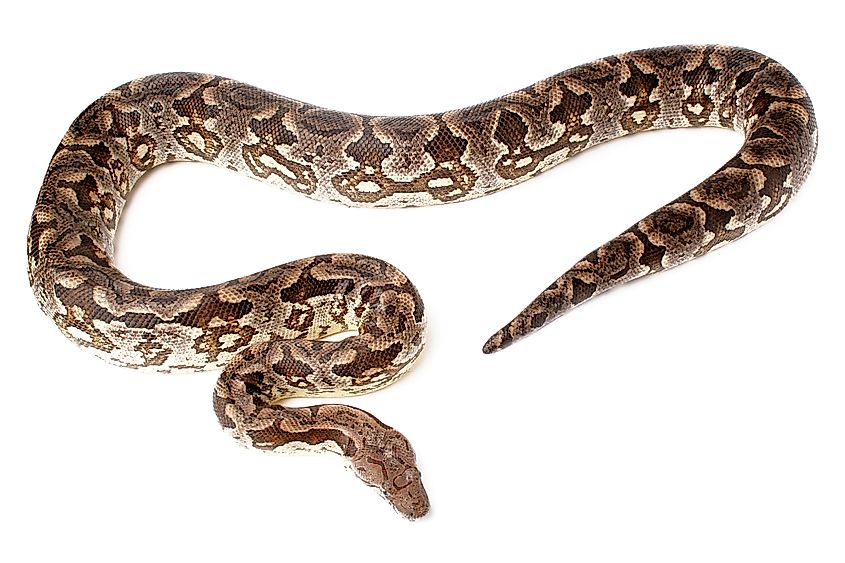
The reticulated python (Malayopython reticulatus) is the world’s longest snake, which has an estimated length of 1.5-6.5m (4.9-21.3ft ) and weighs between 1-75kg (2.2-165.3 lb). The largest specimen measured from Balikpapan, Indonesia, under anesthesia was 6.95m (22.8ft) long and weighed 59kg (130 lb). The specific epithet – ‘reticulatus’ refers to the snake’s complex color pattern, which protects the snake from its predators while also helping them to catch their prey. This python species is a non-venomous constrictor and its diet ranges from large mammals, primates, pigs, birds, and rodents.
Habitat And Range: These pythons inhabit rainforests, grasslands, and woodlands and are found in the countries of South and Southeast Asia.
IUCN Conservation Status: Least Concern
The King Cobra – The Longest Venomous Snake
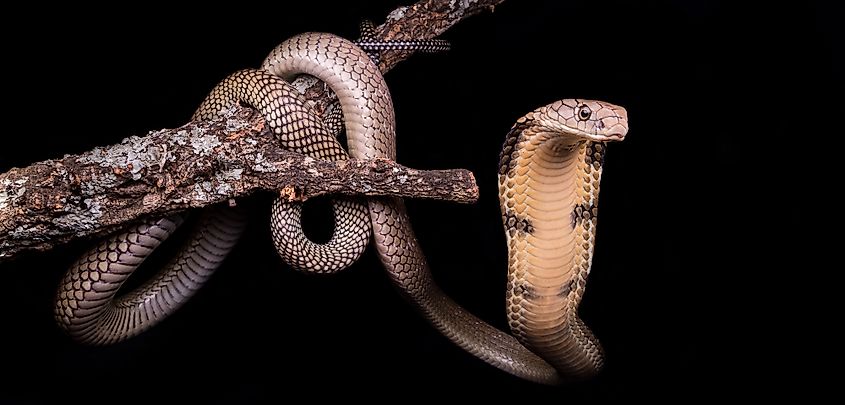
The King Cobra (Ophiophagus hannah) is the world’s longest venomous snake. The snake attains a length of 3.18-4m (10.4-13.1ft) and weighs about 6kg (13 lb). The longest known specimen measured about 5.85m (19.2ft).
The generic name ‘Ophiophagus’ refers to the “snake-eating” behavior of the King cobras. Thus, these snakes often feed on other snakes like rat snakes to small-sized pythons and other snakes that belong to the venomous category. Besides other snakes, the king cobras also feed on rodents, birds, and lizards. However, the king cobra has lost major portions of its habitat to deforestation activities.
Habitat And Range: King cobras inhabit dense forests, mangrove swamps, agricultural lands and prefer to stay near the lakes, streams, and pools of the forest. They are found in the Indian subcontinent as well as in other countries of South and Southeast Asia including China, Vietnam, Myanmar, Indonesia, Cambodia, Philippines, and Thailand.
IUCN Conservation Status: Vulnerable
The Yellow Sea Snake – The Longest Sea Snake
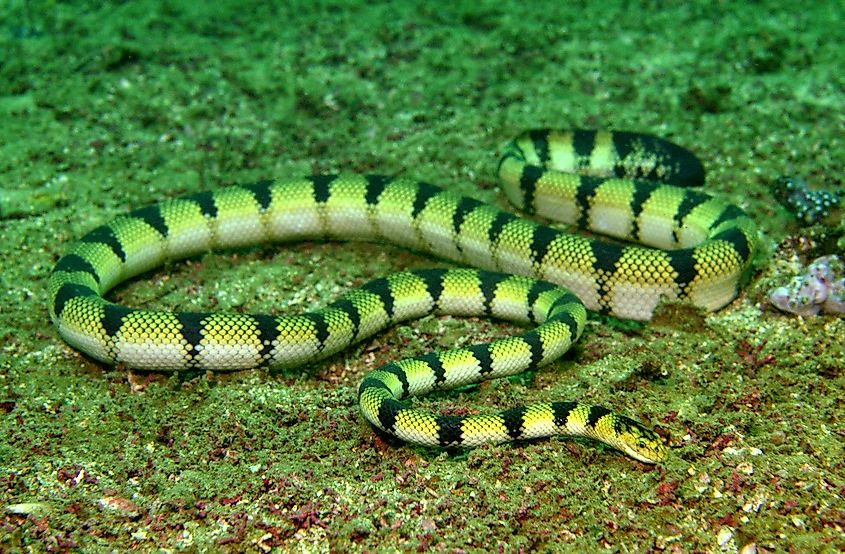
The yellow sea snake (Hydrophis spiralis) is the world’s longest species of sea snake, which has an estimated length of 3.0m (9.8ft). However, most of the collected specimens are less than 2m long. They feed primarily on eels.
Habitat And Range: This snake species is generally found in muddy, sandy ocean bottoms and have been recorded to live up to 50m below the water surface. Yellow sea snakes are found in the northern Indian Ocean and different parts of southeast Asia, as well as in New Caledonia, Philippines, and New Guinea.
IUCN Conservation Status: Least Concern
Green Anaconda – The Heaviest Snake In The World
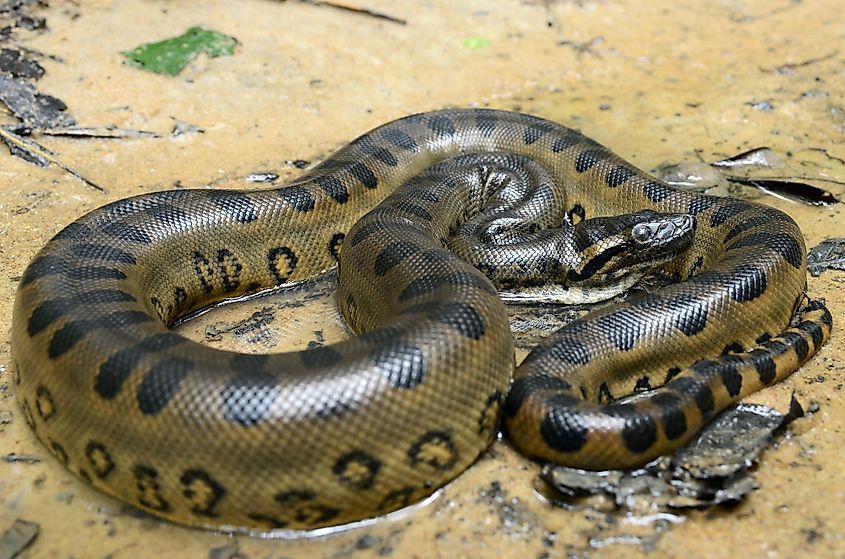
The green anaconda (Eunectes murinus) is the world’s heaviest and one of the longest snake species. The snake has an estimated length of about 5.21m (17.1ft ), with the females being larger than the males. The anacondas are bulky and the adult snake weighs averagely between 66-154 lb. The heaviest verified specimen measures 5.2 m (17.09ft) and weighs 97.5 kg (215 lb). This non-venomous solitary boa feeds on a varied diet that ranges from fishes, turtles, birds, deer, wild pigs, caimans and capybaras to even jaguars.
Habitat And Range: This snake species inhabits swamps, marshes, slow-moving streams, and rivers in the tropical rainforests. They are found in the continent of South America, to the east of the Andes Mountains, in the countries of Brazil, Bolivia, Colombia, Venezuela, Ecuador, Peru, the Guianas, and also in Trinidad and northern Paraguay.
IUCN Conservation Status: Not Evaluated
The Eastern Diamondback Rattlesnake – The Heaviest Venomous Snake
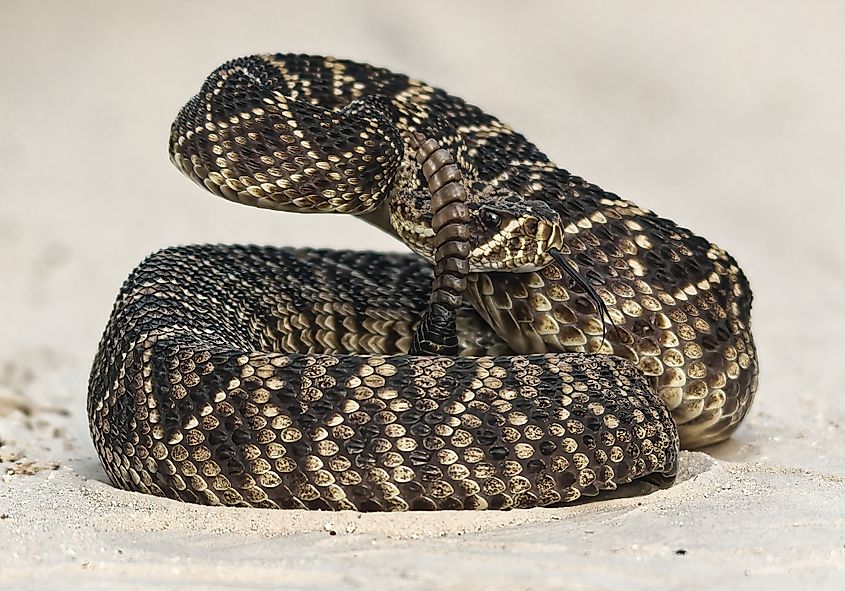
The Eastern diamondback rattlesnake (Crotalus adamanteus) is one of the world’s heaviest known species of venomous snake and is also the largest known species of rattlesnake. The Eastern diamondback rattlesnake averages 1.5-1.8m (4.9-5.9 ft) in length and weighs about 5.5-6.8kg (12-15lb). The adult eastern diamondbacks feed on small mammals like squirrels, rice rats, and rabbits, and also on small birds.
Habitat And Range: This snake species inhabits coastal forests, flatwoods, scrublands and are also occasionally observed in swamp forests and in between the barrier reefs. They are found in the southeastern United States.
IUCN Conservation Status: Least Concern
Other Large Snakes
Burmese Python
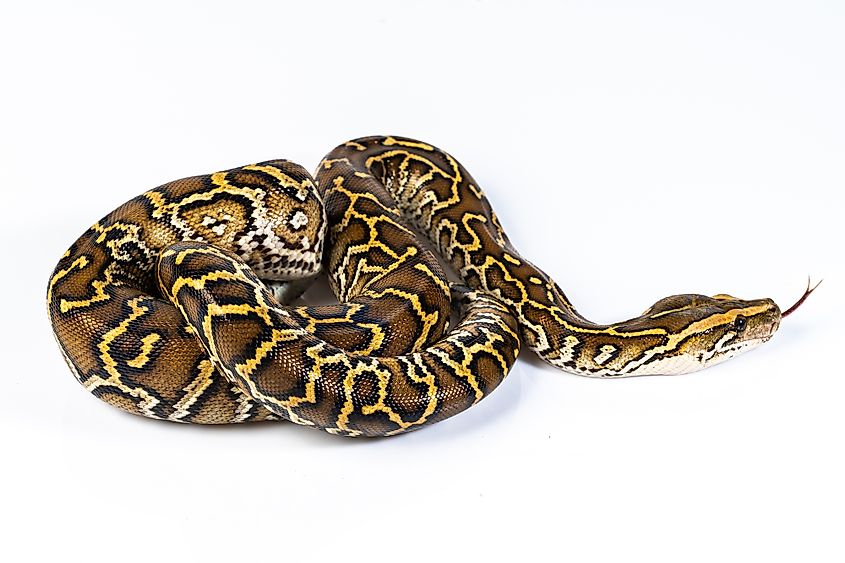
In the wild, an adult Burmese python (Python bivittatus) typically grows up to 5m (16ft), with the females being slightly longer, heavier, and bulkier than the males. It is a dark-colored snake with brown blotches on its back and its attractive color makes it highly popular among pet keepers and in the leather industry. Burmese pythons are mainly nocturnal species and are also excellent swimmers, that spend a majority of their time well hidden in the underbrush. Their diet mainly consists of small birds and mammals which they generally kill by constriction.
Habitat And Range: Burmese Python is found in the tropic and sub-tropic areas of South and Southeast Asia.
IUCN Conservation Status: Vulnerable
African Rock Python
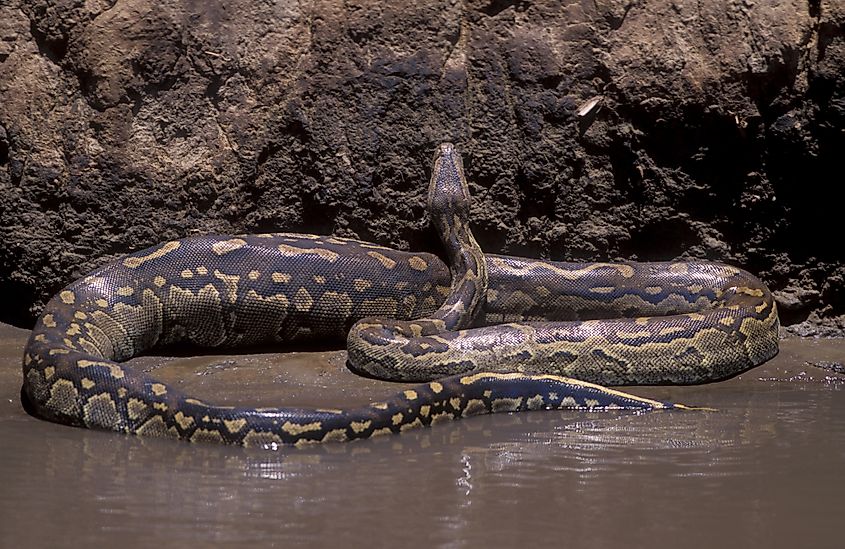
African rock python (Python sebae) is one of the world’s largest snake and also the largest snake in Africa. An adult African rock python measures about 3-3.53m (9.1-11.7ft) and weighs 97-121 lb (44-55kg). It varies considerably in size depending on the area and habitat. This non-venomous snake is thick-bodied and is covered with colored blotches that form large irregular stripes. Their diet mainly consists of a variety of large rodents and mammals which they generally kill by constriction.
Habitat And Range: This snake species inhabits a wide range of habitats including forests, grasslands, rocky areas, and also the edges of swamps, rivers, and lakes. They are found throughout sub-Saharan Africa.
IUCN Conservation Status: Not Evaluated
Indian Python
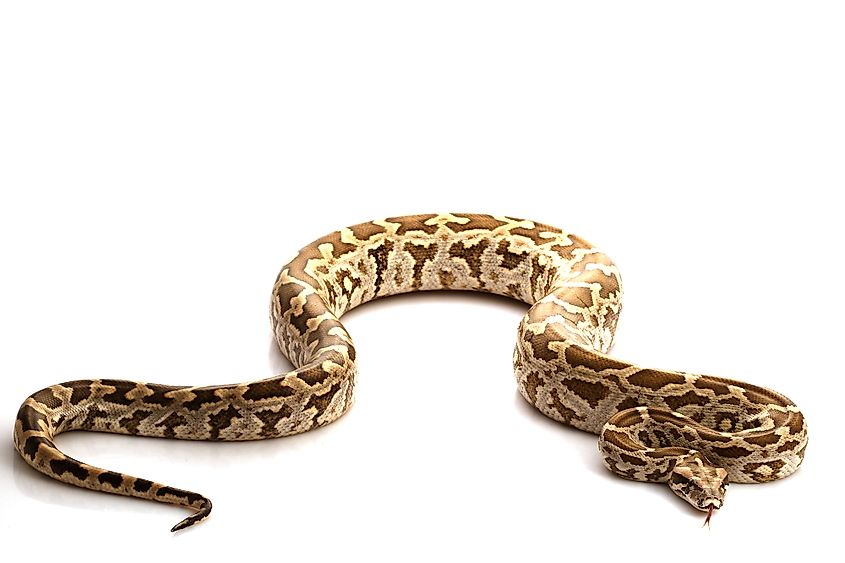
Indian python (Python molurus) is a large, non-venomous python species. The snake species measures about 2.7 to 3 m (8.9-10.8ft) and weighs about 52 kg (115 lb). The Indian python is a light-colored snake, with whitish or yellowish blotched patterns that vary from tan to dark brown color. Their diet mainly consists of mammals, birds, and other reptiles.
Habitat And Range: These snakes are excellent swimmers and inhabit a wide range of habitats including grasslands, marshes, and rocky foothills. These snakes are found in the tropical and sub-tropical areas of the Indian subcontinent and Southeast Asia.
IUCN Conservation Status: Not Evaluated
Amethystine (scrub) Python
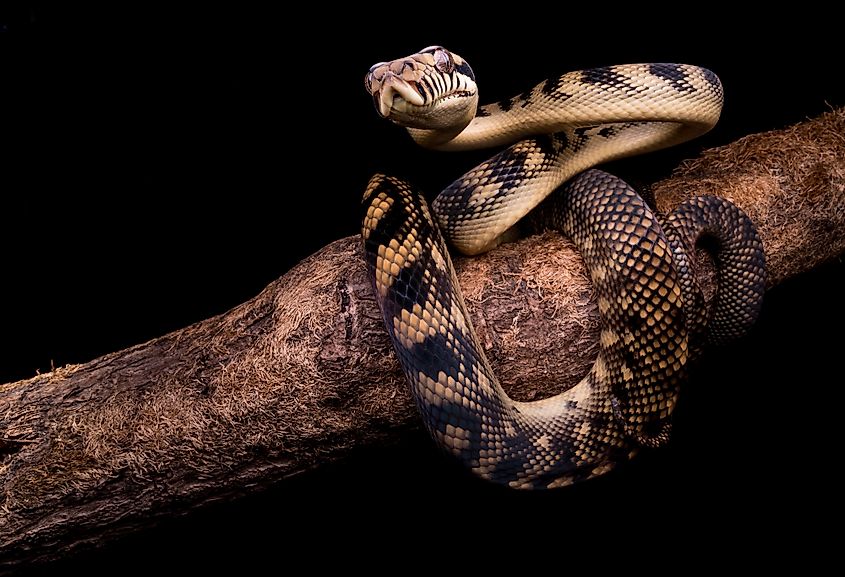
The Amethystine (scrub) python (Simalia amethistina) is one of the largest non-venomous native snakes in Australia and Papua New Guinea. A typical adult specimen measures somewhere up to 8 m (26 ft) with the female weighing about 15 kg (33 lb). The male snakes are smaller and slimmer compared to the females and weigh about 91 kg (200 lb). Their diet consists of birds, bats, rodents, and other small mammals. The larger species that are found in Australia and Papua New Guinea feed on wallabies and cuscus.
Habitat And Range: This snake species generally inhabits bushland and suburbia and are found in Papua New Guinea, Indonesia, and Australia, and Indonesia.
IUCN Conservation Status: Not Evaluated
Yellow Anaconda
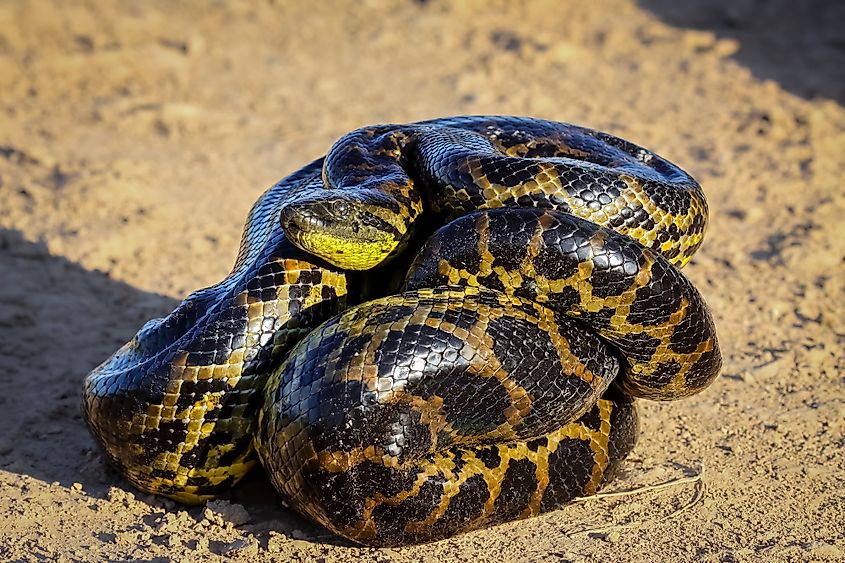
The Yellow anaconda (Eunectes notaeus) is one of the world’s largest snakes. An adult yellow anaconda grows to an average of 3.3-4.4m (10.8-14.4ft) in length and weighs between 25-30kg (55-77 lb). The snake is yellow, or greenish-yellow in color, and is overlaid with black to dark brown spots. The female of this boa species is much larger compared to the males and their diet consists of fish, turtles, and small mammals. They are listed under Appendix II of CITES.
Habitat And Range: This snake species generally prefer aquatic habitat including marshes, swamps, and banks of slow-moving water bodies. It is found in South America.
IUCN Conservation Status: Not Evaluated
Boa Constrictor
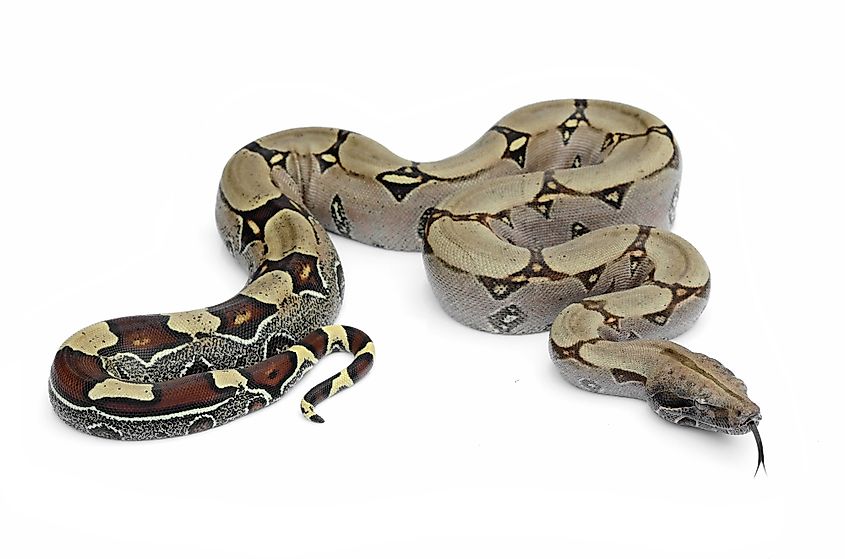
A Boa constrictor (Boa constrictor) is a non-venomous, large, heavy-bodied snake. The snake grows to an average of 0.91-3.96m (3-13ft ) and adult specimens can weigh up to 27kg (60 lb). The size and weight of boa constrictors depend upon the locality and availability of prey species. Their diet consists of birds, rodents, and other small-to-medium-sized mammals. They are listed under Appendix II of CITES.
Habitat And Range: This snake species is mostly terrestrial and can be found in a variety of habitats including rainforests and semi-deserts of Central and South America.
IUCN Conservation Status: Not Evaluated
Cuban Boa
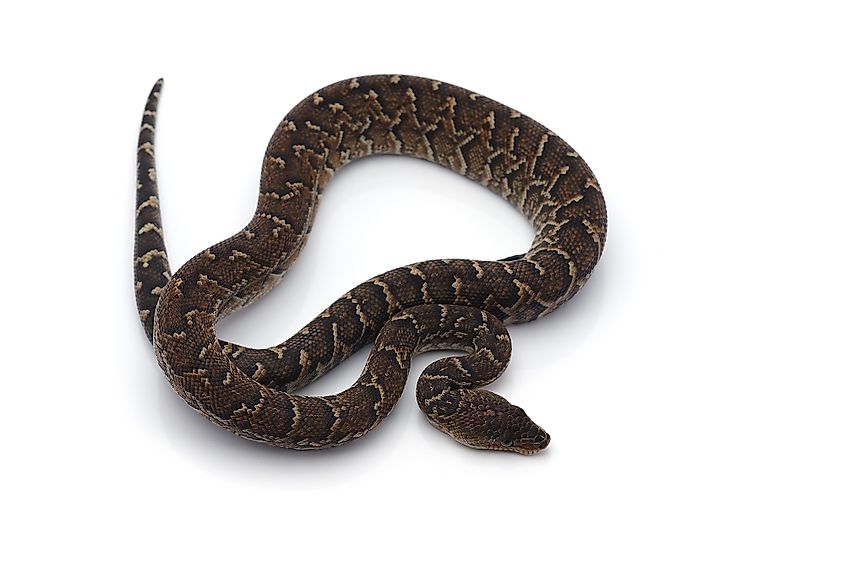
The Cuban boa (Chilabothrus angulifer) is the largest snake on the island of Cuba. It measures around 4.8 m (16 ft) in length and weighs around 27 kg (60 lb). This snake species feeds on small mammals like rodents. The habitat of this island-dwelling snake faces threats from anthropogenic activities.
Habitat And Range: This species is found in Cuba and some adjacent islands and generally inhabits the tropical dry forest and scrub forests.
IUCN Conservation Status: Near Threatened
Papuan Python
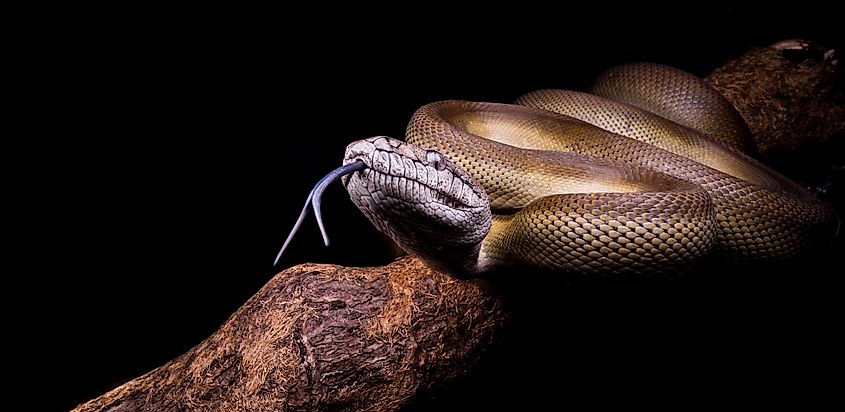
The Papuan python (Apodora papuana) is a python species. An adult Papuan python grows up to 5m (17ft) in length and weighs about 22.5kg (50 lb). Its color varies from black to mustard yellow but it normally has an olive-green appearance. The python species can change its color especially when it gets agitated. The Papuan python is a nocturnal terrestrial species and its diet mainly consists of small mammals. Sometimes it also feeds on other snakes.
Habitat And Range: It is found in the island of New Guinea.
IUCN Conservation Status: Least Concern











